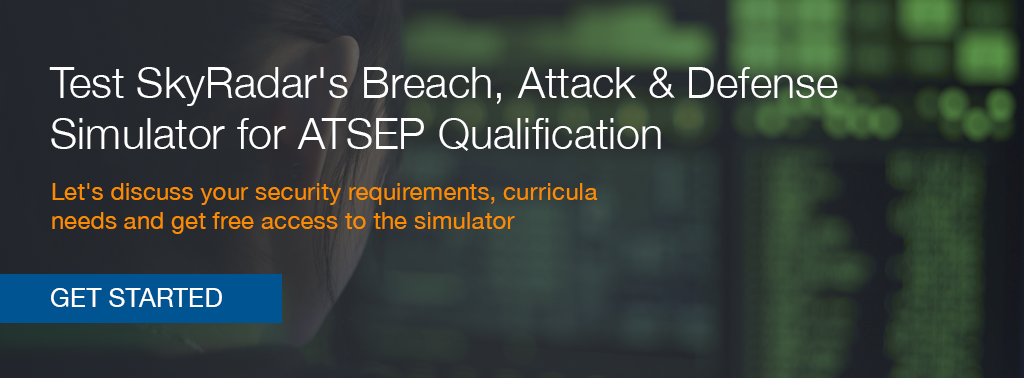Cybersecurity should be a top concern of any business these days, particularly for those in industries that deal with public safety. Air Traffic Control centers must be well prepared to deal with cyberthreats. Recent attacks on large entities such as Air India, the Colonial Pipeline and the Irish Health system elevate the discussion on planning for continuous improvements in cybersecurity. Here's a look at solutions for the aviation industry to make data transmission over electronic networks are as safe as possible.
Breach Concerns in Aviation
How do hackers do it? How do they manage to penetrate the private networks of tech giants? A great deal of cyberattacks are done with automation software purchased from the dark web where cybercriminals sell each other stolen confidential data. That's why every business is now a target - so criminals can steal valuable information and sell it to other criminals.
Risk management in the form of training a staff how to respond to a cyberattack is the key to protecting your digital assets. Aviation companies must invest in robust cybersecurity to ensure they have an enormous edge over skilled hackers. This includes hardware and software to support air traffic management with a focus on safety engineering. The emerging solution for ATSEP to defend against cybercriminals is a Security Operations Center (SOC) with initial and continuous staff training.
Security Operations Centers
A SOC is a cybersecurity division within an organization that uses people, processes and technology to monitor, protect and streamline its operation. No two of these centers are alike, as each one must be customized to respond to different levels and types of cyberthreats. SOCs employ engineers and cybersecurity analysts to detect, identify, block and prevent cybersecurity activity. They often are started to conduct infrastructure audits to detect system vulnerabilities then fix them.
Establishing and routinely updating a policy of cybersecurity requirements is an essential data protection strategy for today's large organizations. The best way to prevent cybersecurity breaches is to prepare for one using multiple layers of protection. Although the most sophisticated hackers can eventually crack a complex system, you at least need to make it extremely challenging for them to the point it's not worth their time to bother.
ATSEP is responsible for the ATC system maintenance and operations in Air Traffic Control and must guard its valuable assets. It's essential for trainees to learn the tools involved with Security Orchestration, Automation and Response (SOAR). Within this set of tools is a Threat Intelligence Platform (TIP).
SkyRadar's ATSEP Cybersecurity Training
You can train your aviation team by working with SkyRadar, which provides an ATSEP Cybersecurity Training Module. It meets international training standards set by ICAO and EASA. The program categorizes skill sets for trainees based on these competency elements:
• Engineering
• Situation Awareness
• Service Provision
• Coordination
• Management of non-routine Situations
• Problem Solving and Decision Making
• Self-Management and Continuous Learning
• Workload Management
• Teamwork
• Communication
Engineers and other personnel who go through SkyRadar's cybersecurity training program must pay attention to technical, procedural and social elements. This solution is based on competence and skill building requirements, typical ATM infrastructure and lessons from large cybersecurity breaches in major industries such as banking, finance and energy.
Cybersecurity Training Phases
Airport personnel should be aware of cybersecurity if they engage through an Air Traffic Control network. This education usually requires previous experience using terminal software. Here are the four phases of training following the selection process.
- Initial Training - Basic knowledge and skills and qualification training
- Unit Training - Learn practice and theory with continued qualification training
- Continuation Training - Focus on emergency and conversions plus review lessons
- Development Training - Deeper hands-on training
Skills developed from SkyRadar's training system, which uses powerful simulators, are applicable to various other sectors including aeronautical and meteorological operations. The knowledge is relevant to understanding navigation and surveillance systems, as well as monitoring and control systems. It also applies to IT infrastructure for data processing, automation and communication systems.
Keeping Aviators Safer from Cybercriminals
The ecosystem of an air traffic management operation comprises interconnected elements such as an airport and airline terminals, an ATM network and communication system, ground surveillance and navigation equipment. Supply chains contribute to the system as well. All of these elements can be protected with interconnected cybersecurity solutions using IoT technology.
SkyRadar's training program features training labs with cyberattack simulators that allow trainees to experience what a breach is like and learn how to counter the attack. This knowledge is useful for engineers and analysts who work for SOCs.
Conclusion
Security Operations Centers in Air Traffic Control environments are helping pave the way to greater cybersecurity protection with the right personnel, processes and technology. ATSEP members can become more knowledgeable about how to fight cybersecurity supported by in SkyRadar's Breach, Attack & Defense training system.
References and Further Reading
- Gartner Top Security and Risk Trends for 2021 (April 2021)
- Tips for Selecting the Right Tools for Your Security Operations Center (January 2020), by Toby Bussa, Jeremy D'Hoinn
- Market Guide for Security Orchestration, Automation and Response Solutions (September 2020), by Claudio Neiva, Craig Lawson, Toby Bussa, Gorka Sadowski
- Read more about Cybersecurity for ATSEP and AVSEC (2019-today), by Dawn Turner, Martin Rupp, Peter Smirnoff, Ulrich Scholten, Alex Cosper and Dennis Vasilev.
- More articles on Cryptography, Key Blocks and Key Management (2018 - today), by Martin Rupp
- Articles on the protection of critical platforms and strategic response (2017 - today), by Ulrich Scholten and Stefan Hansen
- Articles on Key Management and HSMs (2017 - today), by Peter Smirnoff
- Articles on Digital Signing, the eIDAS standard, cyber-security and ATSEP qualification (2016 - today), by Dawn M. Turner




